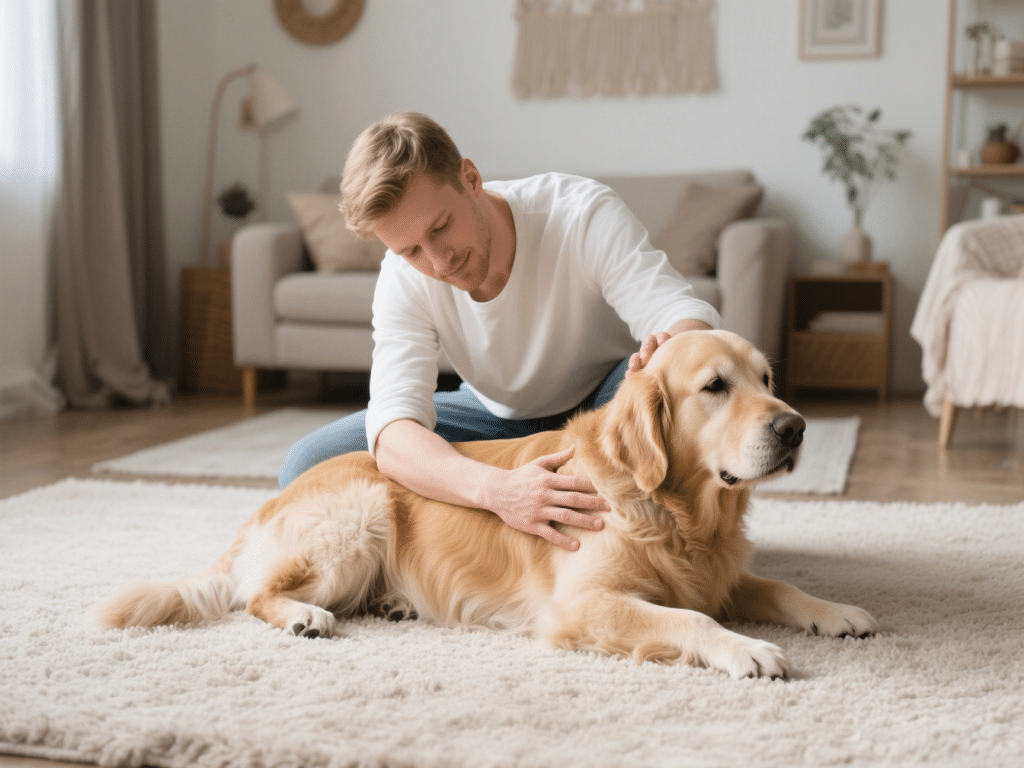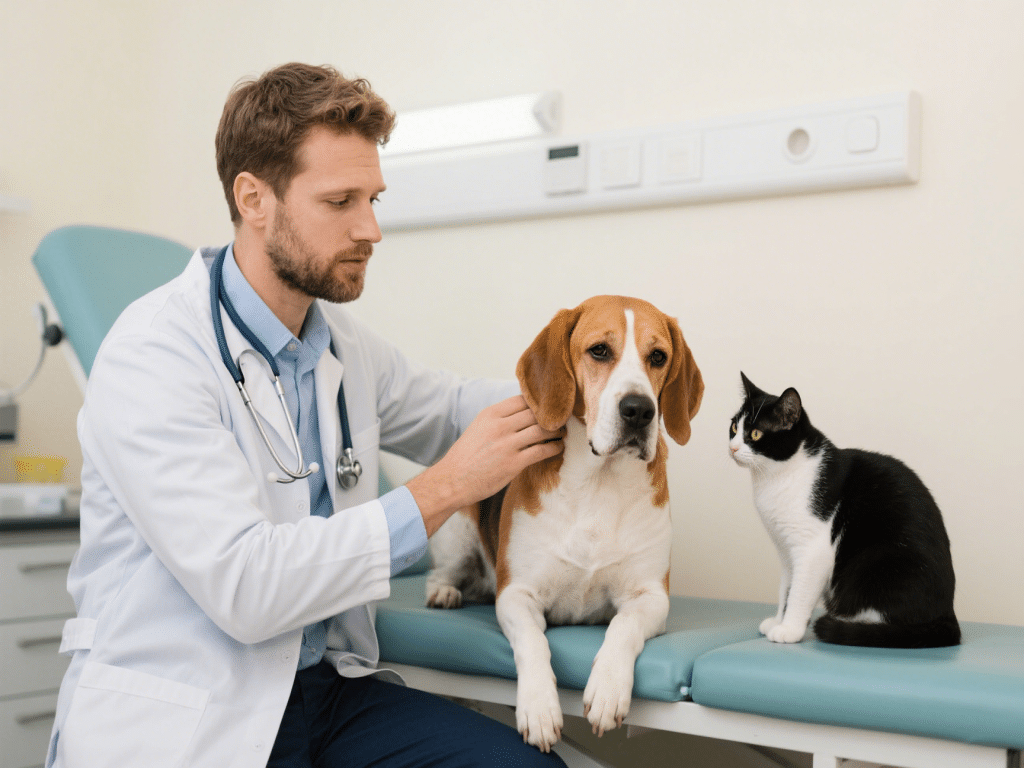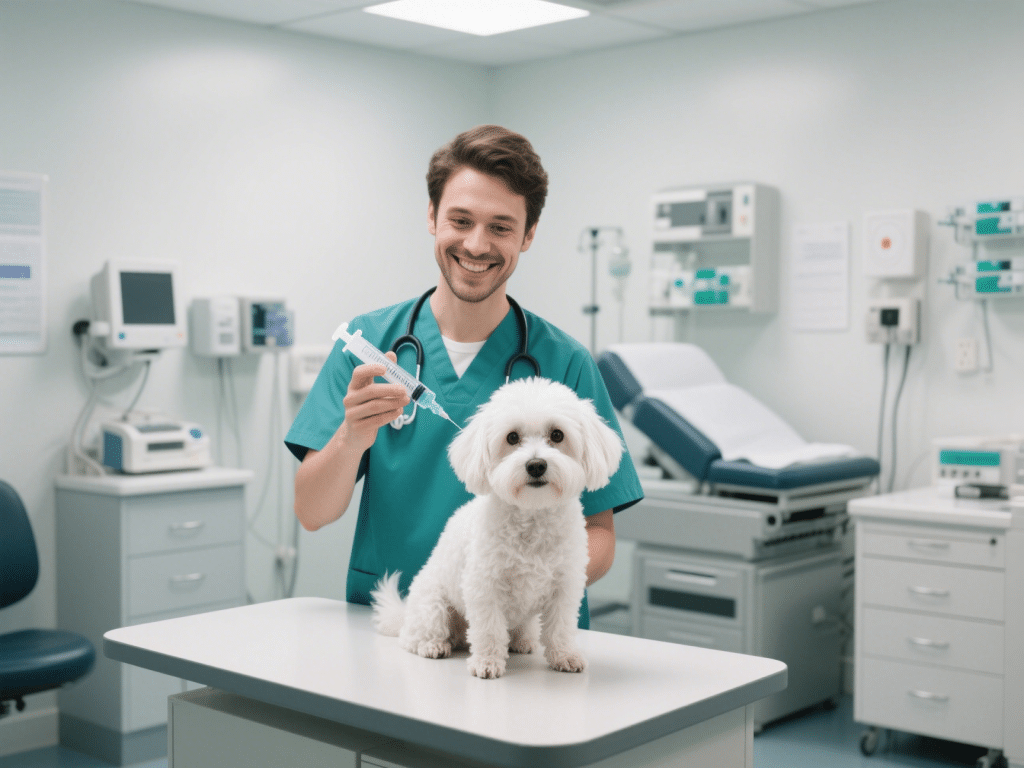Introduction
Gentle massage promotes relaxation, improves blood flow, and strengthens the bond between you and your pet. Whether your dog or cat is anxious, aging, or simply in need of pampering, these basic techniques are easy to learn and safe to practice at home.
Benefits of Pet Massage
Stress & Anxiety Reduction: Gentle strokes release endorphins and lower cortisol, soothing anxious or hyperactive pets.
Improved Circulation: Massage stimulates blood flow to muscles and joints, supporting mobility—crucial for senior pets or those recovering from injury.
Enhanced Flexibility & Joint Health: Regular manipulation of muscles and soft tissues helps maintain flexibility and reduces stiffness.
Early Detection of Lumps & Bruises: Feeling your pet’s body during massage helps you notice abnormalities like lumps, bumps, or soreness early.
Preparing for a Massage Session
Choose a Calm Environment: Quiet room, dim lighting, and minimal distractions. Play soft music or white noise if it comforts your pet.
Comfortable Positioning: For dogs, use a carpeted floor or yoga mat. For cats, allow them to lie on their favorite cushion or lap.
Observe Body Language: Look for relaxed posture, purring (cats), tail wagging (dogs), and soft eyes. If your pet tenses or moves away, pause or adjust technique.
Basic Massage Techniques
Effleurage (Stroking)
Use flat palms or fingertips to apply gentle, long strokes from head to tail.
For dogs, start at the neck, move down the back, and finish at the tail base. For cats, use lighter pressure: stroke along the spine, avoiding direct pressure on the spine itself.
Purpose: Warm up muscles, distribute natural oils, and soothe the nervous system.
Petrissage (Kneading)
Gently lift and knead loose skin and muscle using thumb and fingers in a rolling motion.
Focus on muscle-heavy areas: shoulders, thighs, and base of the neck in dogs. For cats, concentrate on the shoulders and along the back near the hips.
Purpose: Release muscle knots, improve flexibility, and promote lymphatic drainage.
Circular Friction
With your fingertip pads, make small, firm circular motions on larger muscle groups.
For dogs, apply around shoulder blades and the hips. For cats, keep pressure light to avoid startling them.
Purpose: Increase local blood flow and target deeper tension points.
Passive Range of Motion (PROM)
Gently bend and straighten each limb, holding at joints like shoulders, elbows, hips, and knees.
Move slowly, observing for resistance or discomfort. Only extend limbs within your pet’s comfort range.
Purpose: Maintain joint flexibility and reduce stiffness, especially in older pets.
Duration & Frequency
Begin with 5–10 minutes for the first few sessions, gradually increasing to 15–20 minutes if your pet enjoys it.
Aim for 2–3 sessions per week. Short daily sessions (5 minutes) can also be effective for stress relief.
Precautions
Avoid Injured Areas: If you suspect injury or your pet shows pain, consult a veterinarian before continuing massage.
Observe Pet’s Response: Stop immediately if your pet growls, hisses, tenses, or tries to move away.
Contraindications: Do not massage over fractures, open wounds, or areas with inflammation (hot, red skin).
Conclusion
Pet massage is a simple, loving practice that nurtures physical health and emotional well-being. With gentle strokes, attention to body language, and consistent practice, you can provide relief from anxiety, improve circulation, and strengthen your bond. Always proceed with care, respect your pet’s cues, and seek professional guidance if you encounter any health concerns.










Comments on "Pet Massage Basics: Relaxation Techniques for Cats and Dogs" :